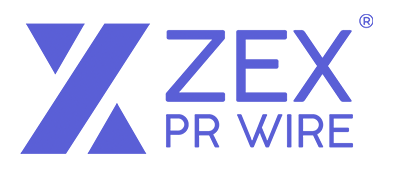GetUsPPE Announces Publication in The Lancet on Continued Healthcare PPE Shortage in the US
Disclaimer: The views, suggestions and opinions expressed here are the sole responsibility of the experts. No ZEX PR Wire journalist or Editor was involved in the writing and production of this article.
This is the largest study of PPE shortages since the start of the COVID-19 pandemic and uses primary-source data from the GetUsPPE Demand Data Hub, a central online repository for PPE requests from hospitals and other healthcare facilities. The GetUsPPE data show specific, self-reported PPE shortages from 6,169 of these facilities, registered in the Demand Data Hub since March 20, 2020. It is the most detailed, quantitative, real-time snapshot of PPE needs across the United States.
Facilities with inadequate PPE supplies reported the details of their needs through an online intake form. This data was correlated with public data sets to determine characteristics of the registered healthcare organizations such as region, rural-urban status and county-level data. In addition to collecting data from facilities that need PPE, GetUsPPE also collects information from groups and individuals who can donate PPE. It matches donated supply with requests through algorithms and manual matching. To date GetUsPPE has provided over 1.5 million pieces of PPE.
“The truth about the availability of PPE during the COVID-19 crisis has unnecessarily become a topic of controversy,” said Megan Ranney, MD, MPH, Department of Emergency Medicine, Alpert Medical School at Brown University. “But there is no controversy. The article published today in The Lancet is based on the real needs reported directly from more than 6,000 healthcare facilities, and it shows that significant shortages continue.”
Highlights of the Study
The study shows that 6,169 hospitals, healthcare and other facilities have made PPE requests through GetUsPPE. The top three facility types requesting PPE include hospitals (27%), outpatient clinics (15%), and skilled nursing facilities (9%). Among regions, the top four regions have been the South (32%), the West (26%), the Northeast (23%), and the Midwest (16%). Of all the organizations represented most requested N95 respirators (74%), surgical masks (64%), gowns (61%), and face shields (60%). Metropolitan areas comprise 5,416 (88%) of the requests. The data show significant disparities between PPE availability and income levels, with requests equaling 3,990 (65%) coming from counties with the highest quartile of median income. This may be because requesters in those areas are more aware of the GetUsPPE Demand Data Hub.
The article as published in The Lancet can be accessed here.
“It’s important that we have data on real, self-reported PPE shortages from those who don’t have enough equipment,” said Ali Raja, MD, MBA, Executive Vice Chair of the Department of Medicine at Massachusetts General Hospital. “Even as we approach four months into this pandemic since the first confirmed case in the US. As the supply chain catches up, we hope that the situation will improve, but the data show that PPE shortages remain a serious problem even at this stage in the pandemic. This unique online information resource provides qualitative data that will prove to be an invaluable resource for healthcare facilities and help guide the restoration of the supply chain at a national level.”
Correspondence pieces represent the views of the authors and not necessarily the views of The Lancet or any Lancet specialty journal. Unlike Articles containing original research, not all Correspondences are externally peer reviewed.
About Personal Protective Equipment (PPE)
Personal Protective Equipment (PPE) includes items such as respirators, face shields, gowns, booties, and gloves that protect workers from viral particles on surfaces and during other situations of close patient contact. When treating patients suspected of having coronavirus, the Centers for Disease Control and Prevention currently recommends contact and droplet precautions, which requires only a procedural mask, gloves, and eye protection. But emerging research [1] demonstrates “that viable virus could be detected in aerosols up to 3 hours post aerosolization” – and prevention of aerosolized (i.e., airborne) spread requires a specific kind of respirator mask (N95) capable of filtering out virus-containing droplets. However, the Department of Health and Human Services (HHS) has estimated that the US has roughly 1% of the 3.5 billion N95 masks needed to manage a full-blown COVID-19 pandemic [2]. A significant increase in PPE manufacturing is critical: healthcare workers simply cannot work safely without these protections.
About the Demand Data Hub
The Demand Data Hub is a single online destination for healthcare workers to report their PPE needs and serves as the authoritative source for PPE demand data. Developed jointly by GetUsPPE and Project N95, the Demand Data Hub includes PPE requests from over 7,000 healthcare facilities. By providing a single, trusted and centralized repository for PPE requirements data, the Demand Data Hub reduces fragmentation of the data, which enables a more efficient and accurate response to healthcare facilities that are experiencing PPE shortages during the pandemic crisis. In addition to their work on the Demand Data Hub, GetUsPPE and Project N95 will continue to operate independently to develop supply chain solutions for PPE for sale (Project N95) and donated PPE (GetUsPPE).
About GetUsPPE
GetUsPPE (GetUsPPE.org) is a movement founded by emergency physicians on the frontlines of the COVID pandemic. Today, it has become a leading national grassroots effort to equip front line health care workers with the protective equipment they need. Through its Demand Data Hub GetUsPPE enables the donation, fabrication, and delivery of currently available PPE to healthcare providers and institutions. Visit www.GetUsPPE.org to find out how you can take action today.
Article: https://www.thelancet.com/journals/lancet/article/PIIS0140-6736(20)31038-2/fulltext
[1] Letter to the Editor, NEJM, Published online March 17, 2020, https://www.nejm.org/doi/full/10.1056/NEJMc2004973
[2] https://www.cnbc.com/2020/03/04/hhs-clarifies-us-has-about-1percent-of-face-masks-needed-for-full-blown-pandemic.html
CONTACT: Dave Close or Amanda Peery-Wolf, [email protected], 617-398-7521
SOURCE GetUsPPE


